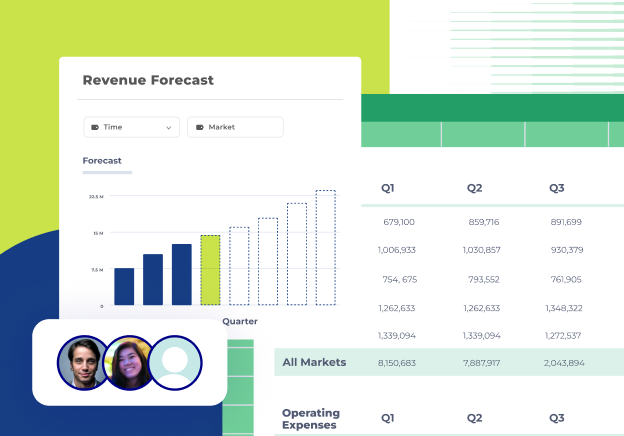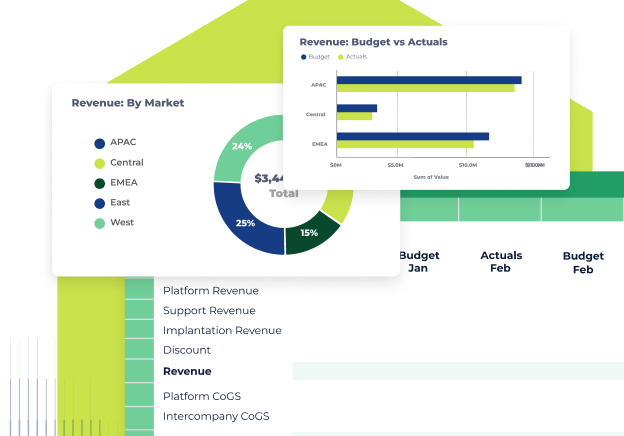Dealing with chaotic financial data can be frustrating and overwhelming. The good news? Improving this process doesn't have to be complicated.
Cube's Jim Bullis and FP&Hey co-founders Drew Murphy and Yarty Kim recently teamed up for a webinar where they shared 10 quick wins for transforming financial data management. Today, I'm excited to pass some of those insights on to you so you can streamline your data processes and make a positive impact on your organization.
Happy planning,
Christina
|
Improving financial data management:
Quick wins for useful, high-quality data |
1. Standardize data entry practices.
This makes your reports more trustworthy and reduces the time spent correcting errors. For example, decide on a consistent format for entering dates and stick with it across all departments to ensure consistency. Create templates for common data entries, establish clear guidelines for how data should be entered, and automate repetitive tasks wherever possible.
|
2. Automate data validation.
This will help you catch errors before they become bigger problems. Implement drop-down lists in your systems to ensure consistent data entry. Focus on validating the most important data points and appoint a data champion to oversee and maintain data quality. This way, you'll save time and avoid headaches down the road.
|
3. Implement access controls.
Imagine if everyone in your team could edit your financial data—one wrong move could result in costly consequences. To reduce the risk of unauthorized changes, keep editors to a minimum and let others have read-only access to what they need. You should also regularly review who has access to make sure everything stays secure and reliable. |
4. Centralize data repositories.
Avoid the confusion of "Where does this data come from?" Keep all data definitions in one place and make sure they're always up-to-date. Educate your team continuously about where to find this centralized data and how to use it. This keeps everyone on the same page and ensures your data stays consistent and reliable. |
5. Enhance data visualization.
Clear, focused visuals help you and your team quickly understand critical metrics, making it easier to identify trends and make informed decisions. Concentrate on the KPIs that matter most and keep your visualizations organized to reduce noise and highlight what's truly important. Regular reviews are useful to ensure your visuals stay relevant and effective, leading to better financial oversight and strategic planning. |
Want even more quick wins to improve your financial data management? Watch the full webinar now on-demand. |
What other content would you like to see from us? |
We want to hear from you!
Send us your ideas and get a free coffee. |
Essential reads: Fix financial data management |
1. Fostering data integrity in your FP&A reporting |
Without data integrity, you run the risk of basing pivotal financial decisions on flawed information, which could significantly impact your organization's fiscal stability and growth. Check out this blog for essential steps to ensure data integrity in your financial reporting (and beyond). |
2. How to boost data usability: 6 tips for CFOs
|
Before finance leaders can start building value from data, they must confront basic data needs, end-users' requirements, and accessibility across the organization. The Wall Street Journal lists six steps CFOs can take to do just that—I recommend you give it a read! |
Join the exclusive Slack community made for finance experts like you! |
Share best practices, connect with like-minded finance professionals, find new opportunities, and geek out. |
|










.png)









.png)

.png?upscale=true&upscale=true&width=545&name=Meta%20image%201200x675_%20Cube%20Analytics%20Webinar%20(3).png)
.png?upscale=true&upscale=true&width=245&name=Blog%20image%20(59).png)

